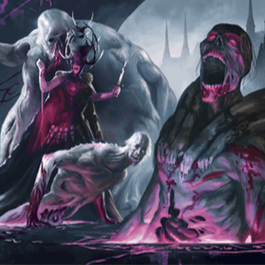This article is part of our FAB101 player guide series. You can find many more on our Player Guides hub.
When the Wizard class was first introduced to Flesh and Blood with Kano, Dracai of Aether, players were introduced to a new kind of damage and a whole new strategy of playing cards on an opponent’s turn. As time went on, many Kano players adapted their decks to a combo-like strategy in which an opponent was swiftly scorched by arcane damage when their hand was empty, and their defenses were down. When Tales of Aria released 3 sets later, the Ice talent and its associated Elemental heroes introduced a new degree of disruption to the game, taxing opponents’ resources and forcibly stripping cards from their hands.
Iyslander is the first hero to combine a Wizard’s prowess for playing at Instant speed with Ice cards’ ability to throw opponents off balance. How does that manifest in-game?
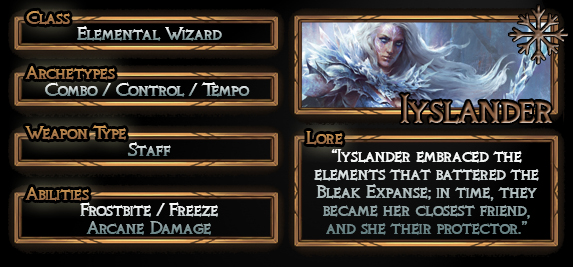
Looking at Iyslander’s hero abilities, we can see that she's incentivized to play more blue cards than most other heroes, since putting a blue card in arsenal allows us the potential to interact on an opponent’s turn. Blues serve two key roles in the deck: they serve as our resources, and they are the disruptions we play on the other player's turn. The blues we include in the deck should therefore be chosen based on how useful they are to play at various points in the game.
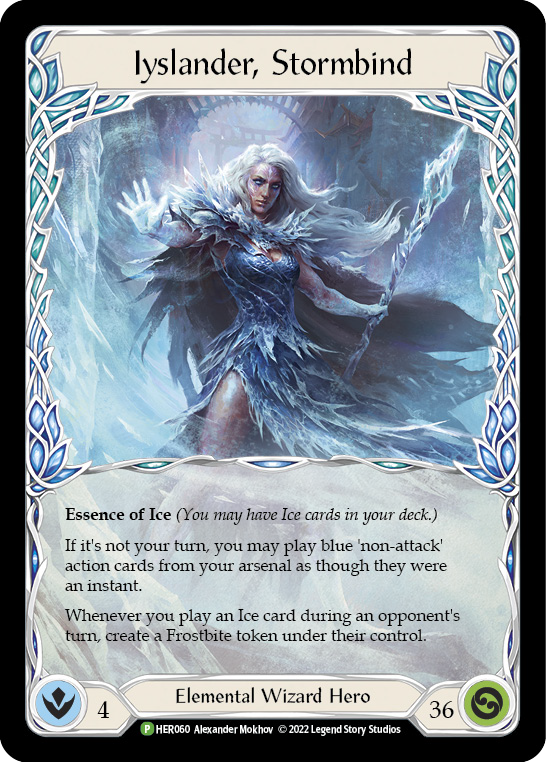
Unlike Kano- who is capable of comfortably playing multiple cards on an opponent’s turn- Iyslander is often limited to playing just the one card from her arsenal on an opponent’s turn. This contrasts Kano’s explosive, combo-like playstyle with Iyslander’s steady, measured stream of disruption and arcane damage, which positions her as a hero with more controlling gameplay.
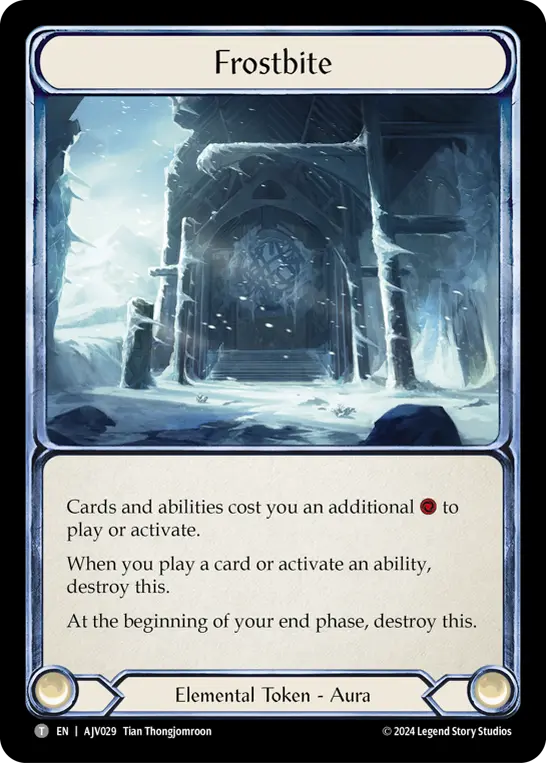
Similarly, Iyslander rewards us for playing Ice cards on opponents’ turns by giving them an extra Frostbite when we do so. Since our primary means of playing cards on opponents’ turns is from the arsenal via Iyslander’s first ability, that means we’re also incentivized to run blue Ice cards, specifically.
While these abilities are powerful, it is worth noting they come at the cost of starting with 10% less health than most other heroes (36 in Classic Constructed, 18 in Blitz). This can factor into our ability to play a long game, as we appear to approach death quicker than our opponent does (more on this when we discuss our equipment suite).
The Weapons of a Wizard
Wizards currently have access to four class-specific weapons, three of which are suitable for a range of builds and matchups. (Sorry Aether Conduit!)
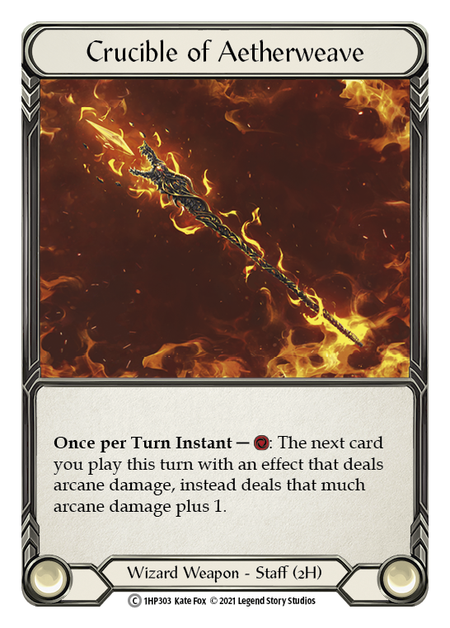
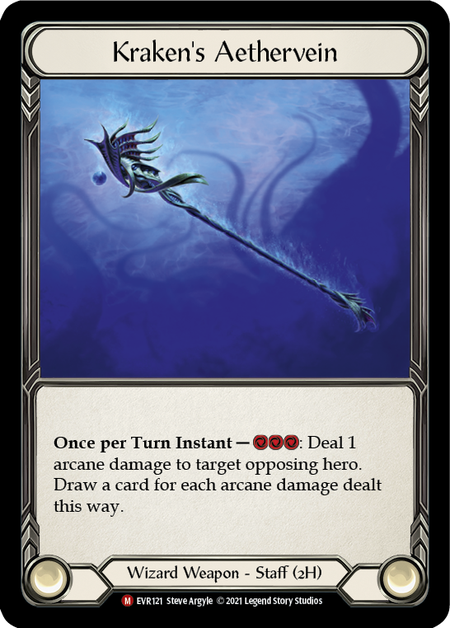
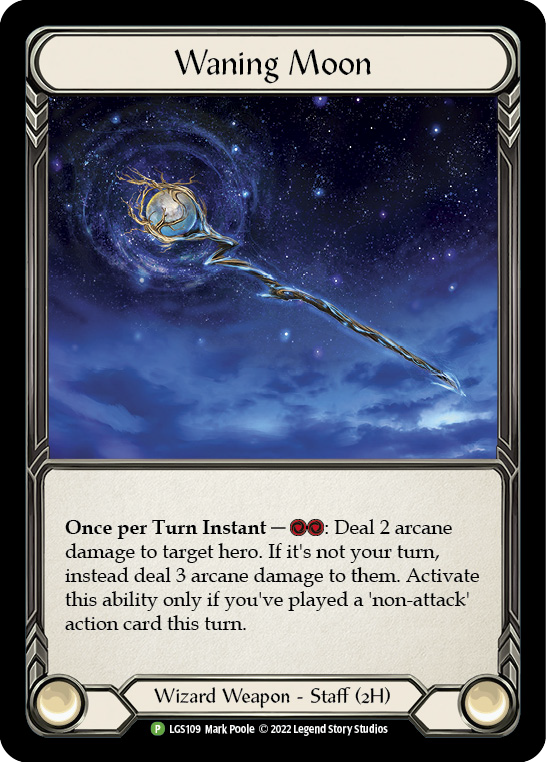
Crucible of Aetherweave lets us increase the arcane damage dealt by an individual card once per turn, which can be very useful if we’re relying on a small selection of cards to help us win the match, either through a combo strategy or because of the importance of a particular card in a matchup (such as Singe against Dromai). Crucible should usually be providing us one to two extra damage per turn cycle at the cost of that many resources. The upside here is that damage is not from a separate source and is therefore harder to prevent; the downside is that the weapon is incapable of dealing any damage on its own, meaning it does nothing on turns in which we’re not presenting arcane damage through another source.
Kraken’s Aethervein is officially Iyslander’s Signature Weapon, and plays as an excellent complement to her ability to tax resources. While the efficiency of its damage output seems poor at first, the effect of drawing cards equal to the damage it deals is capable of effectively reducing its cost of activation to zero, assuming we pitched a blue to activate it and draw a blue from its effect. It is therefore a weapon which constantly threatens to improve the composition of our hand and will often demand a resource from your opponent each turn to prevent its powerful on-hit effect.
(Notably, if the Aethervein can deal more than 1 damage with an activation, it could even act as a source of persistent card advantage; while there is currently no effect that lets us increase its damage in this way, it is an effect we should keep an eye out for in future Wizard card design!)
Ultimately, though, it is a fairly inefficient weapon if our opponent is committed to preventing its damage, trading three of our resources for just one of theirs; as a result, it is most effective against decks that have fewer Blues and Yellows, as it can strip an entire card from an opponent’s hand each time we activate it. Paying three resources to take one of theirs usually isn’t worth it, but it might be worth taking a whole extra card.
Waning Moon is the newest Wizard staff, introduced with Uprising and presenting the most diverse range of possibilities for deck building and playstyle yet. Waning Moon can deal up to five damage per turn cycle at the cost of four resources, which makes it slightly more efficient than Crucible of Aetherweave at a higher upfront resource cost. Moreover, it is its own source of damage, so it inverts the advantages and disadvantages of the Crucible: its damage is more easily prevented by heroes with total Arcane Barrier: 3 or greater and many blues in their deck, but it also allows us the ability to deal damage without having played a card which itself deals arcane damage. I feel that disadvantage is slightly counteracted by its higher damage efficiency, so I’ve mostly been experimenting with Waning Moon in my recent Iyslander builds; but all three of these are reasonable weapon choices for different strategies and metagames.
Equipped for the Cold
Being a Wizard and an Elemental hero with the Essence of Ice, Iyslander has access to a wide range of equipment which can act as central parts of her strategy.
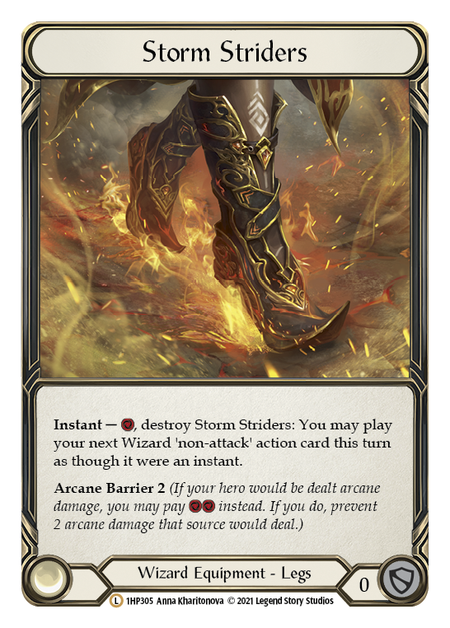
Storm Striders is arguably the single most important piece of equipment for any Wizard, as it will often be pivotal in your ability to close out a game. Storm Striders gives us an opportunity to play an additional card on an opponent’s turn with no restrictions – the card could be any color, and it can be played from either hand or arsenal as though it were an Instant – which gives us access to a critical piece of reach to snatch victory from the jaws of defeat. As I noted when discussing Iyslander’s hero card, she will often appear to be closer to death by nature of having a lower starting life total, but Storm Striders completely inverts this dynamic by allowing you to play a card that deals arcane damage on an opponent’s turn after they have declared an attack and have emptied their hand trying to kill you! Storm Striders gives us a taste of Kano’s combo potential at a critical moment, either to finish the game entirely or swing the tempo at a critical moment.
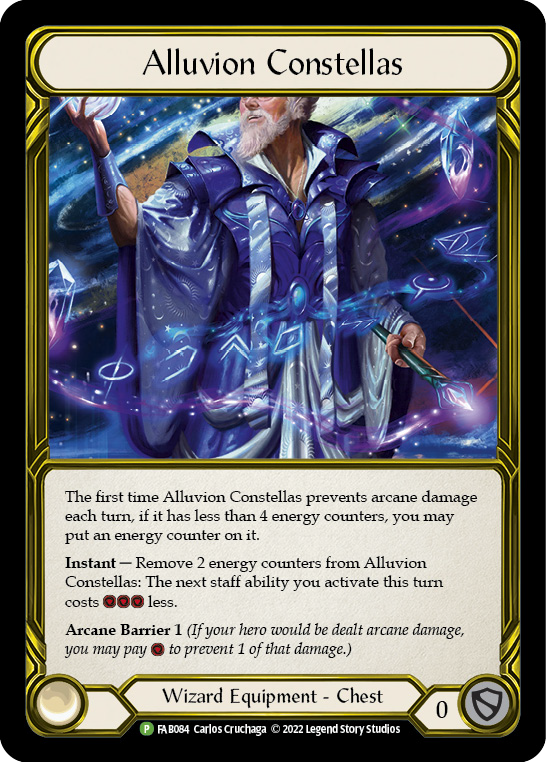
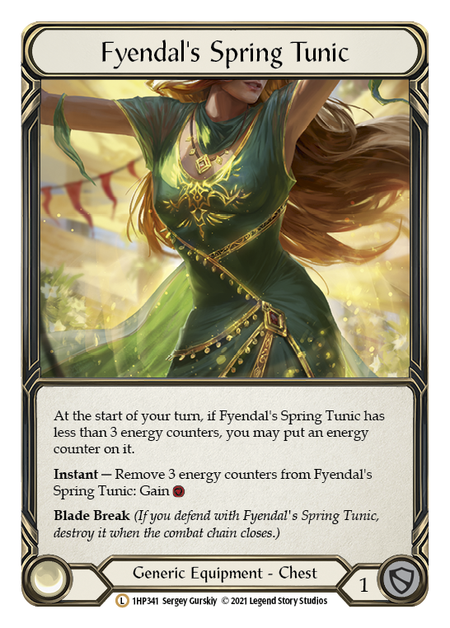
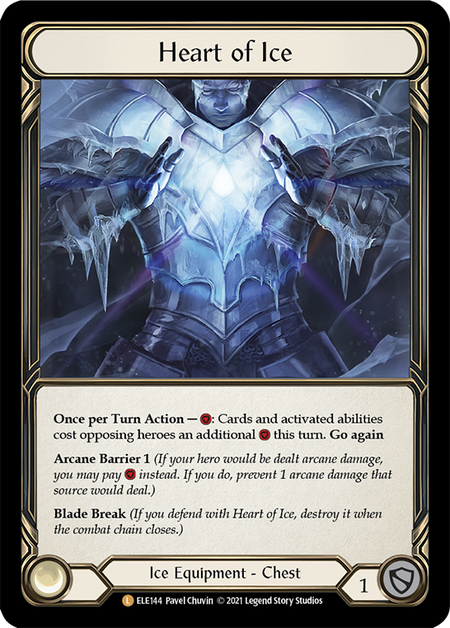
Iyslander has three particularly powerful Legendary equipment options for her chest slot. The default in most matchups will, perhaps unsurprisingly, be one of the most powerful generic equipments in the game: Fyendal’s Spring Tunic. Tunic generates a free resource approximately every three turns- which can help save an awkward hand with few blues in it, or help push a hand to be even more powerful- and provides us with an additional one armor to block with in the mid-late game. Given our affinity for prolonging the game through disruption, Iyslander arguably reaps the greatest number of resources from Spring Tunic of any hero when it’s used wisely.
The other two choices are even more powerful, but more situational to match. Heart of Ice is particularly powerful against Kano- effectively telling them to commit to playing cards on our turn now (while we still have cards in hand to defend ourselves), or not at all this turn- while also providing an additional Arcane Barrier: 1.
Alluvion Constellas also provides an additional Arcane Barrier: 1 and rewards us with even better resource generation than Spring Tunic when we use its Arcane Barrier, functionally providing up to three Resources every two turns (depending on which Staff we’re using with it) over Tunic’s one resource per three turns. This makes it a fantastic value engine in other matchups that consistently deal arcane damage, such as the mirror match and Runeblade matchups like Briar, Chane and especially Viserai.
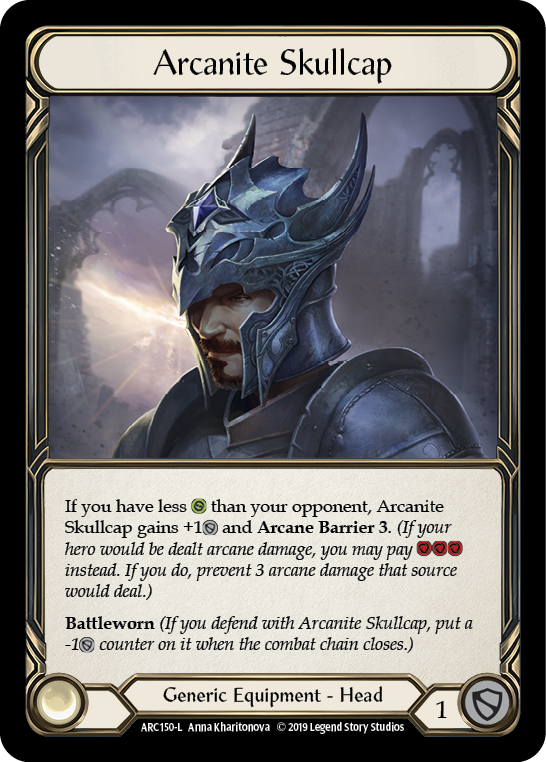
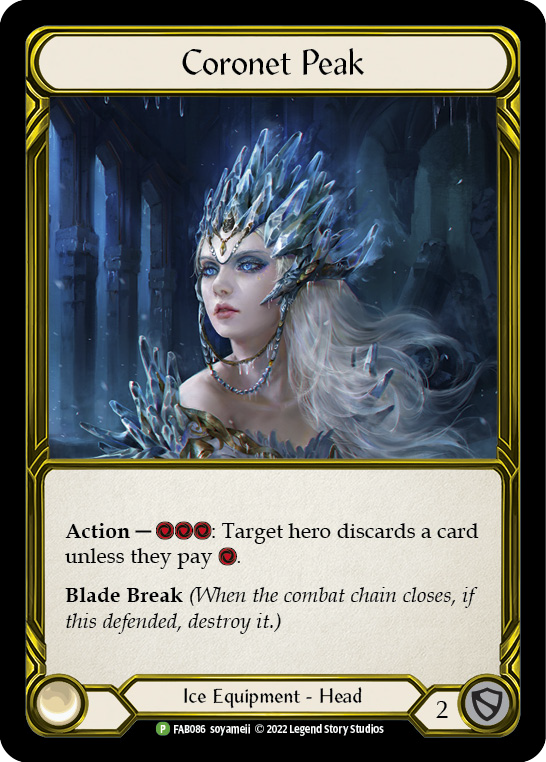
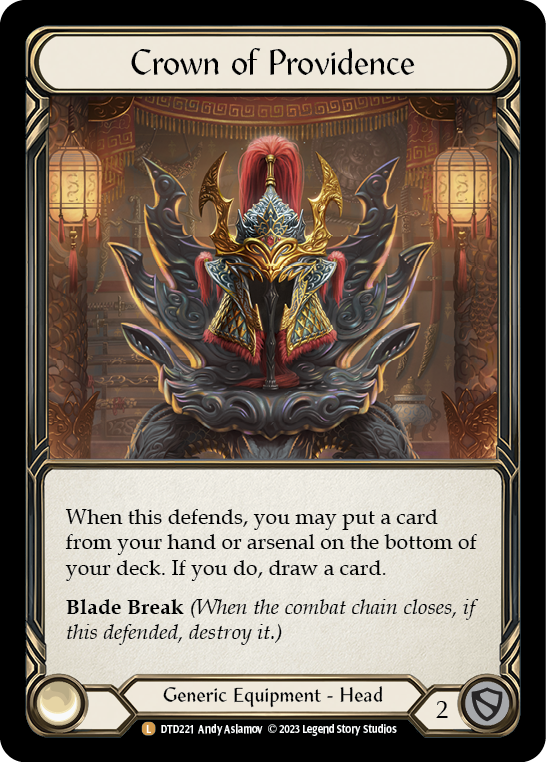
Prior to Uprising’s release, Arcanite Skullcap was the go-to helm for Iyslander purely for providing up to three additional armor to help her survive and prevent critical on-hit effects.
Uprising introduces two powerful alternatives, and Coronet Peak seems like a perfect fit for Iyslander. Its power is not obvious at first, given it functionally turns a blue in your hand into a blue Winter’s Bite (a useful role player card for Iyslander, but far from her most powerful); but its use becomes apparent to help Iyslander navigate particularly stressful turns from her opponent without conceding too much tempo.
Crown of Providence is an interesting alternative to Arcanite Skullcap, sacrificing the ability to block for an additional 1 on a future turn for the chance to cycle a card from hand or arsenal for a new card from the deck. While I generally believe Crown of Providence to be a more powerful helmet than Arcanite Skullcap, Iyslander is usually capable of evacuating her arsenal easily in the face of an incoming Command and Conquer, has reasonable redundancy of effects, and boasts a high blue count, all of which are factors that lead me to prefer Skullcap for her if Coronet Peak is not an option.
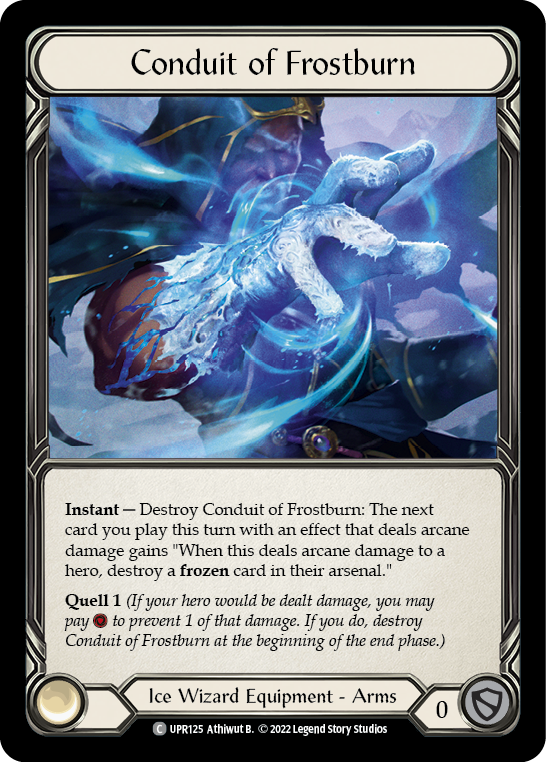

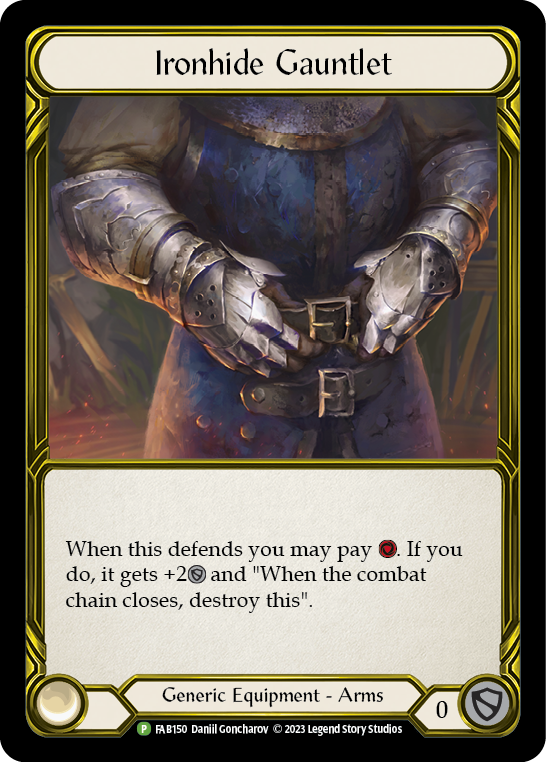
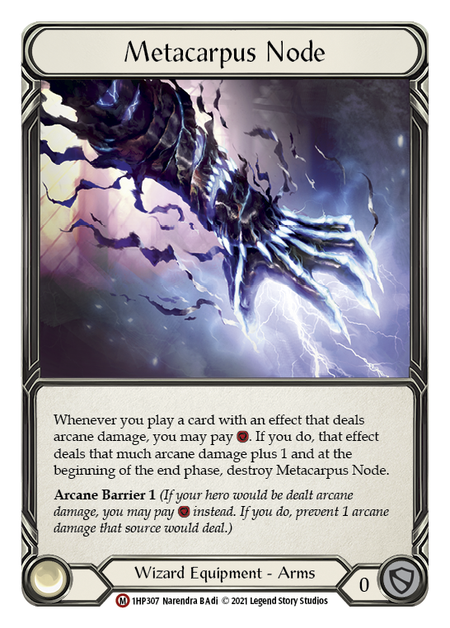
Iyslander’s gloves slot is by far the most open to interpretation and preference.
Goliath Gauntlet may seem out of place in a Wizard deck, but my preference with Iyslander is to use a mixture of attacks and non-Attack actions to stress your opponent’s hand and equipment- much like Runeblades do- and our most powerful and disruptive attacks cost two or more resources.
Ironhide Gauntlet is excellent for leveraging an extra resource on an opponent’s turn to block 2 more damage.
Metacarpus Node gives us an extra piece of Arcane Barrier: 1 for the Wizard mirror match, and some extra arcane damage for matchups where we need to go really tall.
Conduit of Frostburn has grown on me recently as a more flexible option than Ironhide Gauntlet; we can use it reactively to prevent damage across multiple sources with the Quell ability (which is incredibly powerful against Ninjas going wide with small attacks), or proactively to try and destroy an opponent’s arsenal which was frozen by a Cold Snap or Icebind. Give yourself a range of options in the gloves slot for Blitz (especially given that there are clear winners for the helmet and boots, in my opinion) to adapt to a wide range of matchups, and shore up your toughest matchups!
Budget Tip: If that rundown is looking expensive to you, don't worry! You can start playing Iyslander with Hope Merchant's Hood, Spellfire Cloak, and Mage Master Boots, then work towards upgrading the deck (starting with Storm Striders) as your commitment to it grows!
Might and Magic (but mostly Magic)
One difference we’ve established between Kano and Iyslander is the speed at which they play: Kano is usually seeking to generate one or two really big turns, utilizing his hero ability to play multiple cards on an opponent’s turn, while Iyslander is relatively slow and steady. Another big difference between the two comes in deck construction. Since Kano’s ability only allows you to banish non-attack action cards, you’re strongly incentivized away from playing other card types like attacks or reactions, lest you see them on top of the deck when activating Kano and become locked out of using his ability. Because Iyslander plans her turn based on the cards she draws and has very few effects that care about the top of her deck, we can afford to play some of the most powerful generic and Ice attacks!
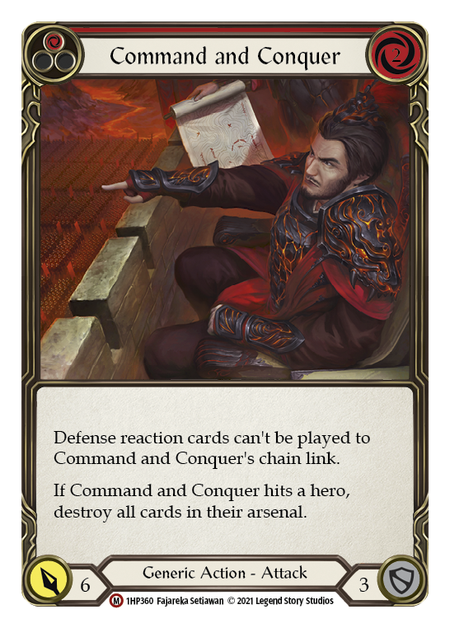

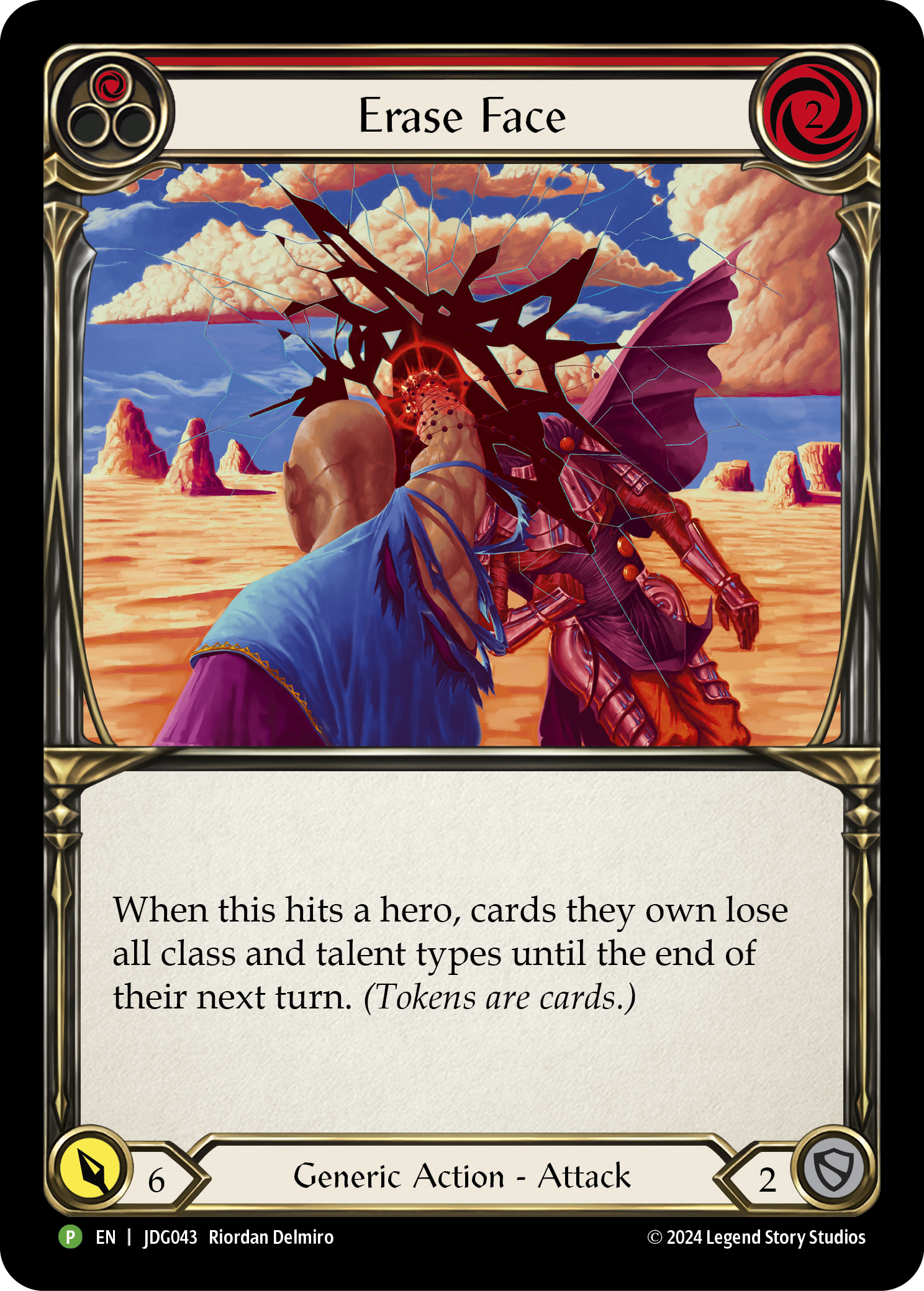
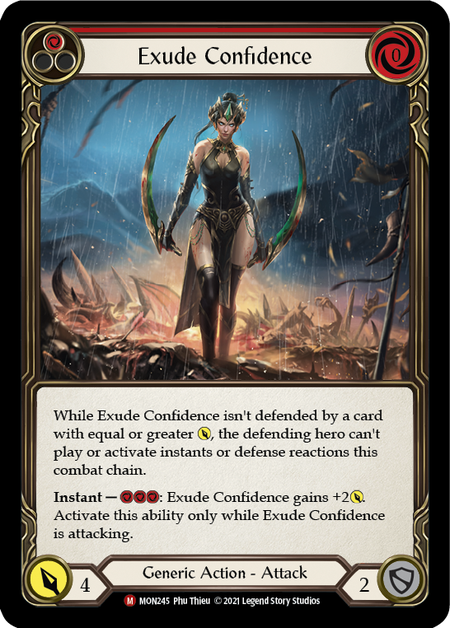
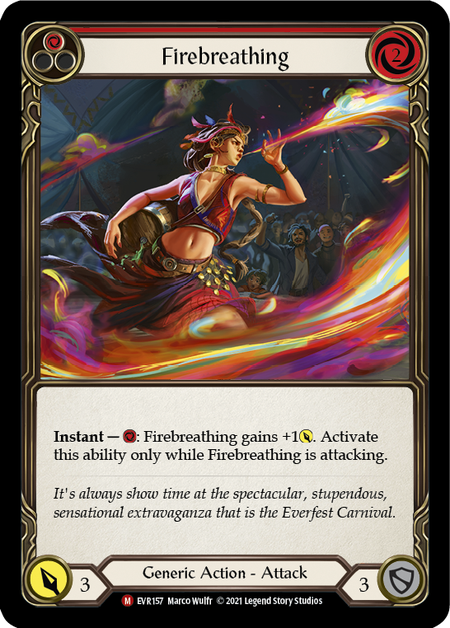
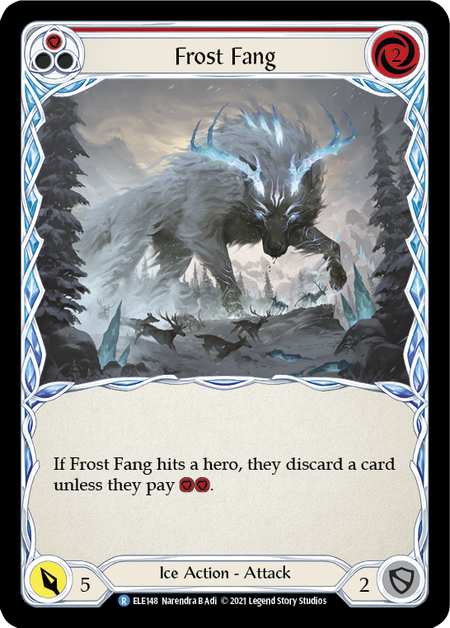
A suite of attacks from among those above (or others you find exciting or intriguing) give Iyslander a wider range of tools to proactively suppress an opponent. Best of all, since our opponents must bring equipment with Arcane Barrier to survive our arcane damage, they have less armor than usual to block out physical damage, making those attacks even better at forcing opponents to block with multiple cards.
Critical Disruption
Iyslander’s disruption suite was already impressive before Uprising, but it has since received some powerful additional tools and some game-deciding silver bullets.
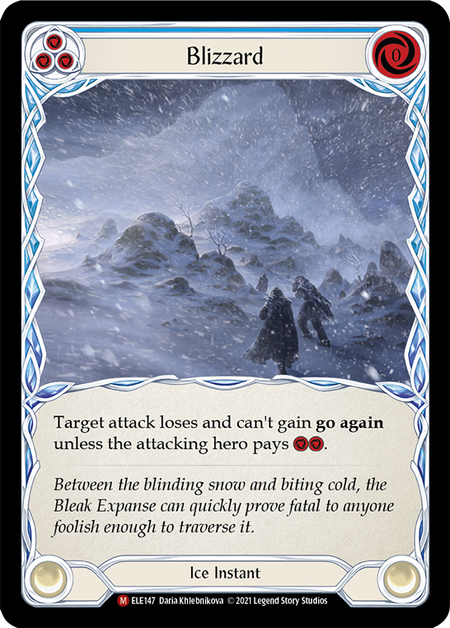
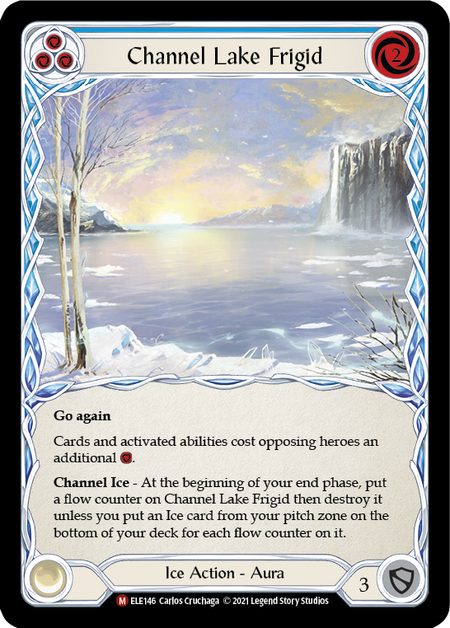
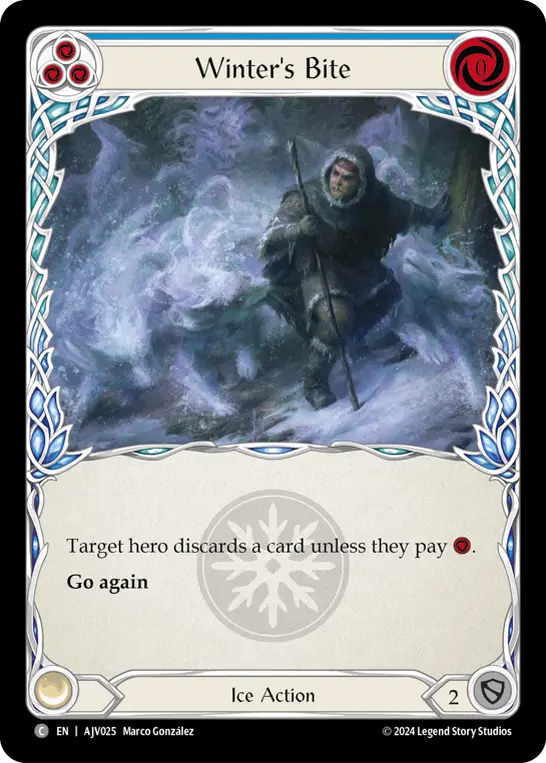
Channel Lake Frigid has already proven its worth to multiple heroes in Flesh and Blood and is easily Iyslander’s most powerful disruption engine, taxing literally every card and activated ability from your opponent. Playing this from the arsenal on an opponent’s turn after they play their first card, inherently committing to a certain line, will often completely change their turn- if it doesn’t simply end it on the spot. Best of all, since the Channel trigger is only checked on our own end step, we can pitch any card to play Lake Frigid, and we’ll get to keep it for an additional turn if we can pitch an Ice card on our turn; Iyslander can comfortably keep Lake Frigid in play for two of your opponent’s turns, and often three or more!
Blizzard is another tried and true disruption piece, and it benefits further from Iyslander’s second ability since it now gives your opponent an additional Frostbite (even when it’s played from your hand!), requiring them to pay three resources to continue their turn!
If Lake Frigid and Blizzard are the gold standard of disruption, Winter’s Bite (blue) is a comfortable silver. When played on an opponent’s turn, its effect will tax our opponent by one resource (or even a whole card if they have no resources floating), and the Frostbite from Iyslander’s ability will demand a second resource for them to do more with their turn. Its go again also allows you to play it on your turn, stripping a resource from them (often in the form of a whole card) while still committing another action such as an attack or a non-attack action that deals arcane damage.
Uprising has now provided us with two more cards that can tax multiple resources when played on an opponent’s turn in the form of Arctic Incarceration and Cold Snap, the latter of which has been particularly impressive in my games so far.

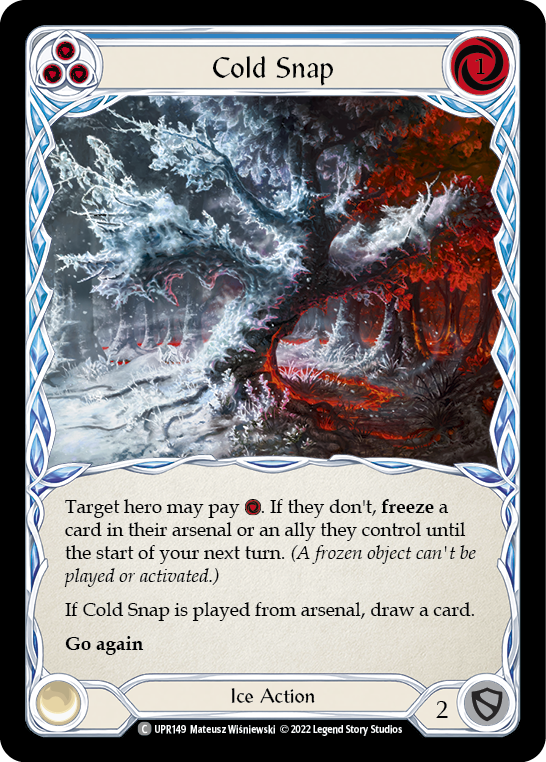
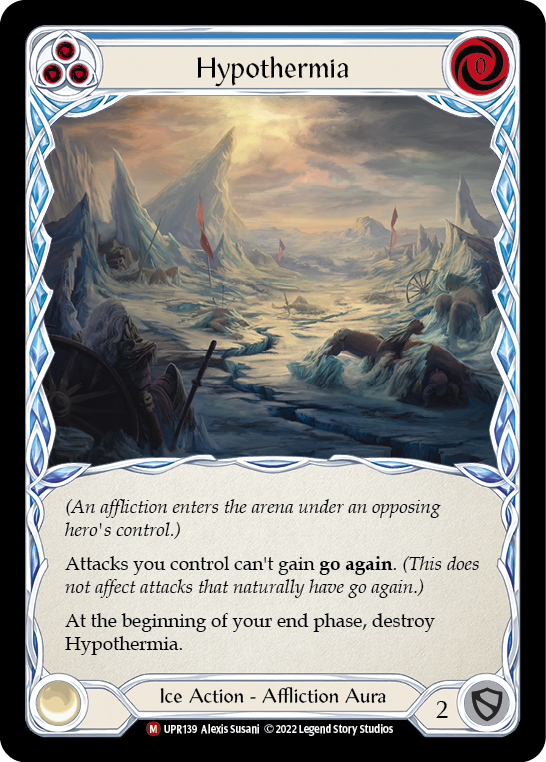
Iyslander’s other powerful disruption effects are also very matchup-specific. Hypothermia can stop an opponent’s turn dead in its tracks, even as a surprise when it’s played on their turn, but only if their attacks don’t inherently have go again. This may seem too specific, but it’s a backbreaking effect against Lexi (nullifying go again from Voltaire, Strike Twice), Viserai (blanking all their copies of Mauvrion Skies), and Briar (making them waste Embodiments of Lightning for no value).
Channel the Bleak Expanse stops three effects which are powerful in Flesh and Blood, particularly drawing cards and searching decks; but some of these are also effects that Iyslander wants to use proactively (like drawing a card from Cold Snap’s ability, or fusing an Aether Icevein), so we should only play this in matchups where it is certain to be more of a hindrance to our opponent than to us.
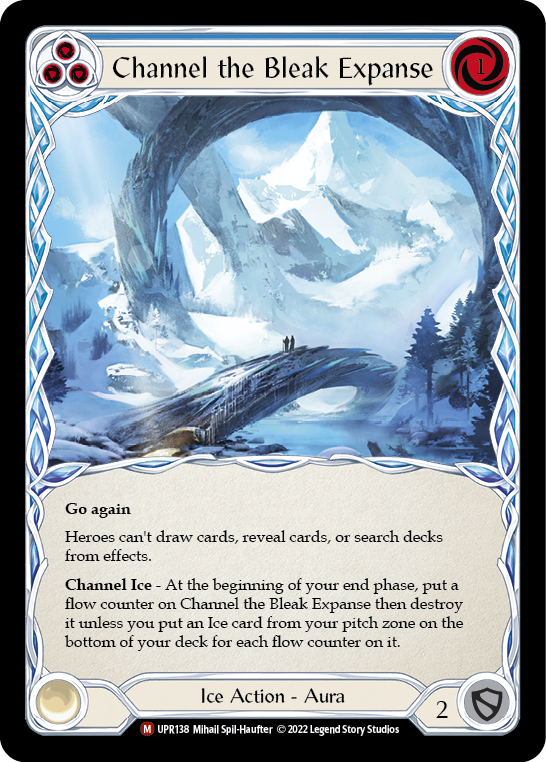
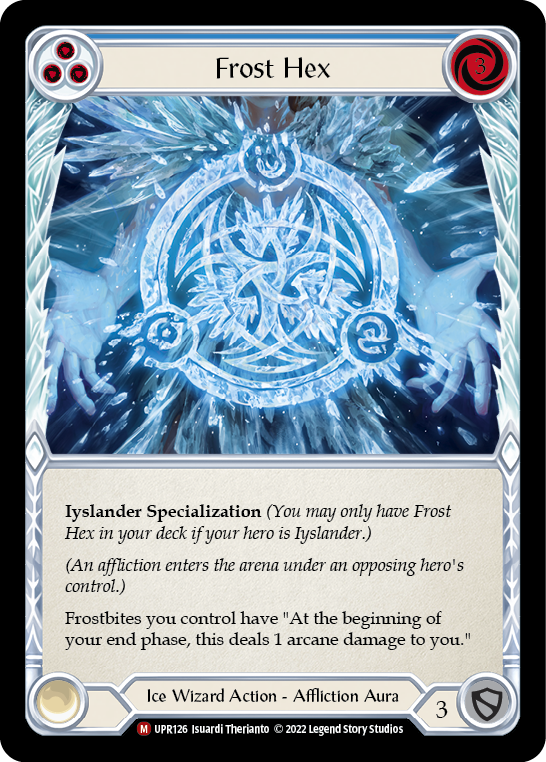
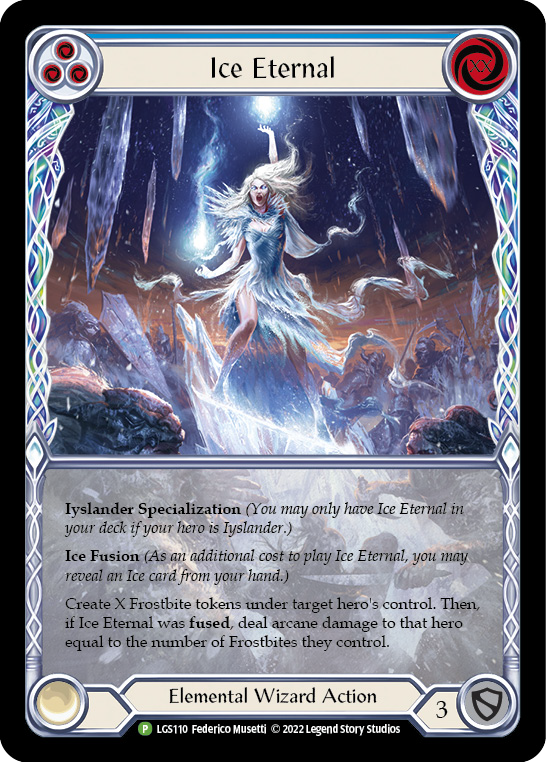
Ice Eternal is capable of suddenly generating multiple Frostbites for an opponent and dealing arcane damage alongside them but is very resource intensive, thus reducing our ability to block when played on an opponent’s turn. It is, however, particularly impressive alongside her other specialisation, Frost Hex, allowing for some combo-like turns against slower control decks!
Endless Possibilities
Iyslander’s greatest strength is also her greatest deckbuilding challenge: she has a wide range of tools at her disposal to approach each matchup in a way that gives her a strong strategy, but fitting all those tools into one list is tricky! While you may want a tempo-control strategy of disrupting and chipping down your opponent before an explosive finish with Storm Striders against aggressive heroes like Fai and Briar, you’ll need a different strategy against control heroes like Oldhim that can consistently block out much of your arcane damage, and perhaps yet another strategy against heroes like Dash who can apply pressure or set up to a big endgame themselves!
Steven Young has written yet another excellent article on the myriad ways to build and play Iyslander, which may serve as a good starting point for helping you find your way in Classic Constructed.
As a starting point for playing her in Blitz, I designed a deck built from Commons and Rares which could upgrade to my ideal Blitz list over time. You'll find notes on strategy and upgrade lines with the decklist.
The Bleak Expanse Calls
Like Kano, Iyslander is a difficult hero to master. Understanding your role in a wide range of matchups will take time, testing, and thought; and practicing your ability to execute a range of game plans will be challenging. I recommend you take time after every game to reflect on what worked well and where you could have improved- but most importantly, have fun!


